



Hexafluorobutadiene: An emerging key material for the semiconductor industry
The semiconductor manufacturing process has extremely high requirements for etching gases. As chip manufacturing processes continue to shrink, the demand for high-precision etching is becoming more and more urgent. Hexafluorobutadiene (C₄F₆), as an advanced etching gas, plays an important role in the semiconductor etching process.1. Application advantages( 1 ) High etching selectivity : In semiconductor manufacturing, hexafluorobutadiene can etch different material layers with high precision. For example, when etching materials such as silicon dioxide and silicon nitride, it can selectively remove the target material with minimal damage to other materials. This is because the molecular structure of hexafluorobutadiene enables it to precisely interact with the chemical bonds of the target material during the etching reaction.( 2 ) Fine etching capability : Hexafluorobutadiene performs well in etching circuit patterns at the submicron and nanometer levels. It can achieve very fine line etching, which helps to improve the integration of chips. For example, in chip manufacturing with a process of 10 nanometers and below, hexafluorobutadiene can etch complex circuit structures to meet the manufacturing requirements of high-performance chips. 2. Economic and environmental benefits( 1 ) Reduce production costs : The use of hexafluorobutadiene can reduce side reactions during the etching process, thereby improving etching efficiency. This means that in large-scale production, the etching process time can be shortened and the operating cost of the equipment can be reduced. For example, compared with traditional etching gases, the use of hexafluorobutadiene can increase the production capacity of etching equipment by about 30%, which correspondingly reduces the etching cost per chip.( 2 ) Good environmental performance : Hexafluorobutadiene produces relatively few decomposition products during the etching process and has less pollution to the environment. Its global warming potential (GWP) is low and meets environmental protection requirements. In the context of increasingly stringent environmental regulations, the use of hexafluorobutadiene can help semiconductor companies meet environmental standards and reduce greenhouse gas emissions. 3. Challenges and solutions( 1 ) Supply stability : The production technology of hexafluorobutadiene is relatively complex, and there are currently few manufacturers in the world that can produce it on a large scale. Jiayuan is keenly aware of this, keeps up with market trends, and is more strict with itself in terms of production quality and production safety, so as to ensure stable supply of products while also guaranteeing product quality.( 2 ) Safe storage and transportation : Hexafluorobutadiene is a high-pressure gas and is somewhat dangerous. Safety regulations must be strictly followed during storage and transportation. For example, special high-pressure gas containers must be used and transportation vehicles must meet safety standards. At the same time, companies need to provide safety training to relevant personnel to reduce safety risks.We have a professional sales team and technical service team to provide customers with high-quality fluorine chemical products, good technical support, and a sound after-sales service system. Based on the principle of "customer first, integrity first", we provide high-quality products and services and go hand in hand with customers. Welcome domestic and foreign enterprises/companies/institutions to establish long-term cooperative relations with our company !
More +
2025-01-07
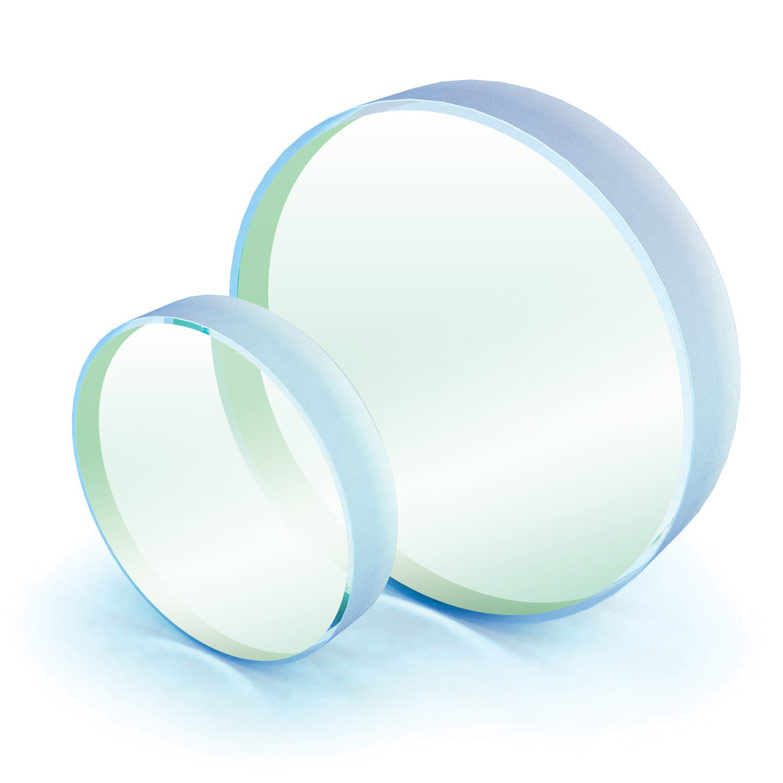
Magnesium fluoride coating: multi-field applications and excellent performance
The main purpose of coating is to reduce reflections and to improve the transmittance of the lens and the quality of the image. In modern lens manufacturing processes, the lens must be coated. Lens coating is based on the principle of optical interference. A layer of substance (usually fluoride) with a thickness of one-quarter wavelength is coated on the surface of the lens to minimize the reflection of the lens to the color light of this wavelength. One layer of film only works on one color light, while multi-layer coating can work on multiple colors of light. Multi-layer coating usually uses different materials to repeatedly coat different thicknesses of film layers on the surface of the lens. Multi-layer coating can greatly improve the transmittance of the lens. For example, the reflectivity of each surface of an uncoated lens is 5%, which is reduced to 2% after single-layer coating, and can be reduced to 0.2% with multi-layer coating. This can greatly reduce the diffuse reflection between the lenses of the lens, thereby improving the contrast and sharpness of the image.Magnesium fluoride coatingMagnesium fluoride is a kind of coating material. Magnesium fluoride crystal (MgF 2 ) belongs to the tetragonal system, with a melting point of 1255°C, high hardness, good mechanical properties, stable chemical properties, and not easy to deliquesce and corrode. Its main feature in optical properties is that it has a high transmittance in the vacuum ultraviolet band (the transmittance at 170nm is still above 80%). It is widely used in optical fiber communications, military fields and various optical components.Application of magnesium fluoride coatingThe main application of magnesium fluoride coating is coating on the surface of ordinary tempered glass, thereby improving the light transmittance of the tempered glass surface and achieving easy cleaning function, while also extending the life of the glass. AR coated glass can currently be mainly used in solar cell components, solar thermal, construction, automotive glass and other fields.Preparation of magnesium fluoride coatingMagnesium fluoride coating uses evaporation method, which is called evaporation coating by heating and evaporating a certain substance to make it deposit on the solid surface. This method was first proposed by Faraday in 1857 and has become one of the commonly used coating technologies in modern times. Evaporating substances such as metals, compounds, etc. are placed in a crucible or hung on a hot wire as an evaporation source, and the substrates to be plated such as metals, ceramics, plastics, etc. are placed in front of the crucible. After the system is evacuated to a high vacuum, the crucible is heated to evaporate the substance in it, and the atoms or molecules of the evaporated substance are deposited on the surface of the substrate in a condensed manner. The film thickness can range from hundreds of angstroms to several microns. The film thickness is determined by the evaporation rate and time of the evaporation source (or by the charge amount), and is related to the distance between the source and the substrate. For large-area coating, a rotating substrate or multiple evaporation sources are often used to ensure the uniformity of the film thickness. The distance from the evaporation source to the substrate should be less than the mean free path of the vapor molecules in the residual gas to prevent chemical reactions caused by collisions between the vapor molecules and the residual gas molecules. The high-quality glass is processed on one or both sides to have a lower reflectance than ordinary glass, and the reflectivity of light is reduced to below 1%. In the visible light range, the single-sided reflectivity of ordinary glass is about 4%, and the total spectral reflectivity is about 8%.Jiayuan has layout in both the upstream and downstream of the fluorine chemical industry chain, forming a complete fluorine chemical industry chain. At the same time, Jiayuan is also constantly conducting technological research and development and innovation, and has stronger competitiveness and market position in the production, sales and research and development of magnesium fluoride products. If you are interested in magnesium fluoride products or Jiayuan, you can visit our official website for viewing and consultation!
More +
2025-01-07

Sodium metaphosphate: widely used in many fields and has broad market prospects
Recently, the application of sodium metaphosphate in many industries has attracted widespread attention. Its unique properties enable it to play an important role in the fields of chemical, food, pharmaceuticals, etc., and the market demand is also showing a growing trend.In the chemical industry, sodium metaphosphate is an important auxiliary agent. It is often used in metal surface treatment, electroplating and cleaning. Due to its good corrosiveness and cleaning ability, it can effectively remove dirt and oxides on the metal surface, providing a good foundation for the subsequent processing of metal products. For example, in the automobile manufacturing industry, sodium metaphosphate can be used to clean auto parts and improve the surface quality of parts, thereby ensuring the overall performance and safety of the car. In addition, in the field of industrial cleaning, sodium metaphosphate is also a commonly used cleaning agent that can quickly and effectively remove various oil stains and stains, providing convenience for industrial production.The food industry is another important application area of sodium metaphosphate. As a food additive, sodium metaphosphate can be used as a food emulsifier, chelating agent and texturizer. In dairy products, it can stabilize the emulsion system and improve the taste and quality of dairy products; in meat products, sodium metaphosphate can improve the gel strength and water holding capacity of meat products, making meat products more tender and juicy1. As people's requirements for food quality continue to increase, the market demand for food-grade sodium metaphosphate is also gradually increasing. According to data from relevant market research institutions, the market size of food-grade sodium metaphosphate has continued to expand in recent years, and it is expected to maintain a high growth rate in the next few years.In the pharmaceutical field, sodium metaphosphate also has certain applications. It can be used as an excipient in pharmaceutical preparations to improve the stability and solubility of drugs. For example, in some oral liquid preparations, sodium metaphosphate can play a role in regulating pH and increasing drug stability. In addition, in some topical drugs, sodium metaphosphate can also be used as a moisturizer and stabilizer to improve the efficacy of the drug. From the market perspective, the global sodium metaphosphate market is currently highly competitive. Many domestic and foreign companies have increased their R&D investment and continuously launched new products and technologies to improve their market competitiveness. At the same time, with the continuous improvement of environmental protection requirements, some environmentally friendly sodium metaphosphate products have gradually gained favor in the market. For example, some companies have developed low-pollution, low-energy sodium metaphosphate production processes, which not only reduce production costs, but also reduce the impact on the environment, and have good market prospects.Industry experts said that as a multifunctional chemical, sodium metaphosphate is still expanding its application areas. In the future, with the continuous advancement of science and technology and the continuous increase in market demand, the market size of sodium metaphosphate is expected to continue to expand. At the same time, Jiayuan keeps up with market trends, continuously strengthens technological innovation, and improves product quality and performance to meet market demand.
More +
2024-12-25

Zinc fluoride: a versatile inorganic compound
Zinc fluoride (chemical formula ZnF2, formula weight 103.37) is a white block or square crystalline powder with multiple properties and a wide range of applications. Recently, with the acceleration of industrialization, zinc fluoride, as an important inorganic compound, has been continuously released in the market demand.In terms of application fields, zinc fluoride has a wide range of uses. In the electronics industry, zinc fluoride is an important raw material for manufacturing electronic components and semiconductor materials, such as field effect transistors and metal oxide semiconductor field effect transistors. In addition, zinc fluoride can also be used to manufacture optoelectronic devices and solar cells.In the chemical industry, zinc fluoride is also widely used. It can be used to make chemicals such as fluoride and hydrogen fluoride, and is also an important raw material for making organic synthesis catalysts, coatings and plastics. Zinc fluoride is also widely used in the manufacture of ceramic materials, including high-temperature ceramics and electronic ceramics, as well as in the manufacture of ceramic glazes to make the ceramic surface smoother, harder and more wear-resistant.Zinc fluoride also plays an important role in glass manufacturing. It can be used to make optical glass and special glass, as well as to enhance the corrosion resistance and high temperature resistance of glass fiber. In addition, zinc fluoride is also used in the pharmaceutical industry, for example, in the manufacture of oral care products and drugs, such as anticancer drugs and antiviral drugs.At present, China is a major producer and exporter of zinc fluoride in the world. In recent years, with the upgrading of market demand and the continuous optimization of related processes, my country's high-end zinc fluoride production capacity has increased, and the zinc fluoride industry structure has gradually adjusted. Against the background of increasingly stringent environmental protection and market supervision, the development of the zinc fluoride industry will upgrade towards safety, greenness and high-endness.In conclusion, zinc fluoride, as a multifunctional inorganic compound, plays an important role in many fields. However, due to its toxicity, strict protective measures must be taken during use and handling to ensure the safety of personnel and the environment. With the continuous development of science and technology and the continuous expansion of market demand, the application field of zinc fluoride will be further expanded, bringing more convenience and benefits to people's lives and work.Jiayuan upholds a rigorous service attitude, resolutely implements standardized management, improves product quality and prevents risks , optimizes resource allocation , promotes industrial upgrading , and takes every step to ensure green, environmental protection and safety .
More +
2024-12-25

Changzhou Jiayuan Semiconductor Technology Training was successfully completed, injecting new impetus into the development of the industry
Recently, our company was fortunate to invite senior experts in the semiconductor industry to conduct a brief and concise semiconductor technology training. This training not only deepened our understanding of semiconductor technology, but also provided valuable guidance for our future technology development and strategic planning.The semiconductor manufacturing process is undoubtedly the core part of this training. As a key link in the process, experts introduced in detail the selection of photoresists, the principles and operating points of photolithography machines, and the characteristics and application scenarios of each technology from contact lithography to advanced projection lithography. In terms of etching technology, the principles and application differences between wet etching and dry etching, and the in-depth interpretation of advanced etching technologies such as reactive ion etching (RIE) have enabled the trainees to deeply understand the key impact of this process on the performance of semiconductor devices. In the thin film deposition technology link, whether it is physical vapor deposition (PVD) or chemical vapor deposition (CVD), the principles of various methods and their applications in the preparation of different thin film materials have been fully explained. At the same time, the explanation of the doping process enables the trainees to understand how ion implantation and diffusion doping can accurately control the electrical properties of semiconductors, which is crucial to the manufacture of high-performance semiconductor devices.When talking about the application of semiconductor technology, the expert particularly emphasized the core position of semiconductors in the electronic information industry, as well as its broad application prospects in emerging fields such as 5G communications, the Internet of Things, and artificial intelligence. He pointed out that with the continuous development of science and technology, semiconductor technology will continue to promote innovation and progress in various industries. In addition, the expert also shared the challenges and solutions encountered in the process of semiconductor technology research and development and industrialization based on his many years of work experience. He encouraged us to be bold in innovation, break through technical bottlenecks, and continuously improve our technical strength and core competitiveness.After the training, the company leaders and employees said that they benefited a lot. We not only learned the basic knowledge of semiconductor technology, but also had a deeper understanding and thinking about the development of the semiconductor industry. This training not only enhanced our technical confidence, but also pointed out the direction for our future work.On semiconductor technology has been successfully completed ! Our company will take this training as an opportunity to further strengthen exchanges and cooperation with experts in the semiconductor industry and continuously improve our own technical level and innovation ability. We believe that under the guidance and support of experts, our company will achieve more brilliant achievements in the semiconductor field and make greater contributions to scientific and technological progress and economic development.
More +
2024-12-25

Application of rare earth fluoride products
Rare earth fluoride products, as compounds formed by the combination of rare earth elements and fluorine elements, have unique physical and chemical properties and have shown broad application prospects in many fields. The following are the main application areas of rare earth fluoride products:1. Optoelectronic materialsLED lighting: Rare earth fluoride can enhance the brightness and color temperature of LEDs, improve the life and reliability of LEDs, reduce energy consumption and heat generation, and make LEDs more suitable for use in lighting.Liquid crystal display: Rare earth fluoride is a key component of liquid crystal display. Rare earth elements can optimize the color of the display and increase its brightness, while effectively preventing problems such as leakage and corrosion of the display.2. Battery fieldRare earth fluoride plays an important role in batteries, including lithium-ion batteries, nickel-metal hydride batteries, etc. Its addition can effectively increase the energy density and cycle life of the battery, reduce the self-discharge rate in the battery, and thus improve the overall performance of the battery.3. Catalyst fieldRare earth fluoride is also usually contained in the catalyst in the automobile exhaust treatment system as a component of the catalyst to promote the exhaust gas purification process. Rare earth fluoride can significantly improve the efficiency and stability of the catalyst, reduce the pollution level of exhaust emissions, and contribute to environmental protection. 4. Ceramic Materials FieldRare earth fluorides can also be used in ceramic materials. Rare earth elements can effectively improve the heat resistance, hardness, corrosion resistance, wear resistance and optical properties of the materials, allowing ceramic materials to maintain stability and excellent performance under extreme conditions such as high temperature and high pressure.5. Magnetic materials fieldPartially fluorinated rare earths have excellent magnetic properties and can be used to prepare high-performance magnetic storage materials and magnetic sensors, providing support for the development of information technology.6. Biomedical fieldIn recent years, rare earth fluoride has also shown great application potential in the biomedical field. For example, rare earth fluoride nanoparticles can be used in bioimaging and drug delivery due to their good hydrophilicity and biocompatibility. By connecting anti-tumor drug molecules through covalent or electrostatic interactions, rare earth fluoride nanoparticles can be used for drug delivery and tumor treatment, providing new ideas and methods for cancer treatment.7. Other fieldsIn addition, rare earth fluoride is also widely used in the fields of laser materials and new materials. In laser technology, the excellent properties of rare earth fluoride make it an indispensable key material for manufacturing high-performance lasers. At the same time, the application of rare earth fluoride in the field of new materials is also being explored and expanded.In summary, the series of rare earth fluoride products, with their unique physical and chemical properties, have shown broad application prospects and huge market potential in many fields. With the continuous advancement of science and technology and the rapid upgrading of industry, the application fields of the series of rare earth fluoride products will continue to expand and deepen, injecting new vitality and impetus into the development of modern science and technology and industry.Jiayuan focuses on the research and development of fluorine chemistry, and has a professional R&D team and advanced production equipment. Through continuous technological innovation, Jiayuan has made important breakthroughs in the preparation process and performance optimization of fluorinated rare earth products. In the future, Jiayuan will continue to increase R&D investment and technological innovation to promote the widespread application and industrialization of fluorinated rare earth products.
More +
2024-12-17

Industry elites gathered together to plan a new blueprint for future development
—— Experts from various fields and company CEOs visited our company to conduct in-depth cooperation and exchangesRecently, our company welcomed a number of experts and entrepreneurs from the fields of chemical industry and new energy to discuss in depth the production, application and market prospects of boron trifluoride and boric acid 10. The purpose of this meeting is to strengthen exchanges and cooperation within the industry and jointly promote the development of related industries.At the meeting, the head of our company first introduced the company's research and development achievements and production capacity in the field of boron trifluoride and boric acid 10. He pointed out that boron trifluoride, as an important inorganic compound, has a wide range of applications in rocket fuel, semiconductor manufacturing and chemical raw materials. And boric acid 10 plays an irreplaceable role in nuclear power plants, defense industry and medical fields due to its excellent neutron absorption characteristics.Afterwards, an expert shared the complete set of technical processes for separating boron-10 isotopes by cryogenic distillation. The successful development of this technology not only broke the foreign technology monopoly, but also realized the large-scale production of boron-10 isotopes, providing a strong guarantee for the safe and orderly development of China's nuclear power industry. Experts and entrepreneurs at the meeting said that this technological breakthrough will greatly promote the application and development of boric acid-10 in related fields.During the discussion session, experts and entrepreneurs at the meeting had a heated discussion on topics such as the production process, quality control, market application and future development trend of boron trifluoride and boric acid 10. They all agreed that with the increasing global demand for clean energy and nuclear energy safety, the market demand for boron trifluoride and boric acid 10 will continue to grow. At the same time, they also put forward suggestions such as strengthening technology research and development, optimizing production processes, and expanding application areas, in order to jointly promote the sustainable and healthy development of related industries.The person in charge of our company said that we will seriously absorb the valuable opinions of experts and entrepreneurs, further strengthen exchanges and cooperation with people inside and outside the industry, continuously improve the company's research and development and production capabilities in the field of boron trifluoride and boric acid 10, and make greater contributions to promoting the development of related industries in my country.The convening of this conference not only strengthened the communication and cooperation within and outside the industry, but also provided a broader market prospect and development space for the production and application of boron trifluoride and boric acid 10. Our company will take this conference as an opportunity to continue to increase R&D investment, optimize production processes, expand application areas, and contribute more wisdom and strength to promote the development of related industries in my country.
More +
2024-12-17

Jiayuan was invited to participate in the 2024 National Third Generation Semiconductor Conference
On October 22, 2024, the National Third Generation Semiconductor Conference was grandly held in Suzhou Nano City in Suzhou, Jiangsu, and the National Third Generation Semiconductor "Best New Enterprise Award" award ceremony was held. The conference was hosted by Today Semiconductor and attracted many industry elites and corporate representatives. The atmosphere was warm and unprecedented.As a grand event for the third-generation semiconductor industry, this conference brought together more than 30 corporate executives to give speeches, and more than 50 exhibitors showcased their latest technological achievements and products. The conference held in-depth discussions on industry innovation, competition landscape and future trends, providing participants with a full range of industry insights.With the rapid development of science and technology, third-generation semiconductor technology has become the focus of the industry. Due to its superior electrical properties and high temperature resistance, this type of material is widely used in electric vehicles, 5G base stations, renewable energy, power electronics and other fields. In the current complex global semiconductor industry chain, especially under the Chinese government's policy of continuously promoting independent and controllable semiconductors, domestic semiconductor companies are facing unprecedented opportunities and challenges. This conference provides a platform for resource integration, technical exchanges and market information sharing for all parties, which will help promote the innovation and market expansion of third-generation semiconductor technology.The holding of this conference not only provides an opportunity for in-depth learning and communication for industry participants, but also is an active attempt to enhance the competitiveness of the entire semiconductor industry chain. Jiayuan actively participated, not only listened to the experience sharing of industry leaders, but also had in-depth discussions with peers on topics of concern to each other , laying the foundation for future cooperation. In the future, Jiayuan will continue to uphold the concept of innovation, continuously improve technical strength and service level, further strengthen cooperation and exchanges with all parties in the industry, and jointly promote the development and application of third-generation semiconductor technology.
More +
2024-12-17
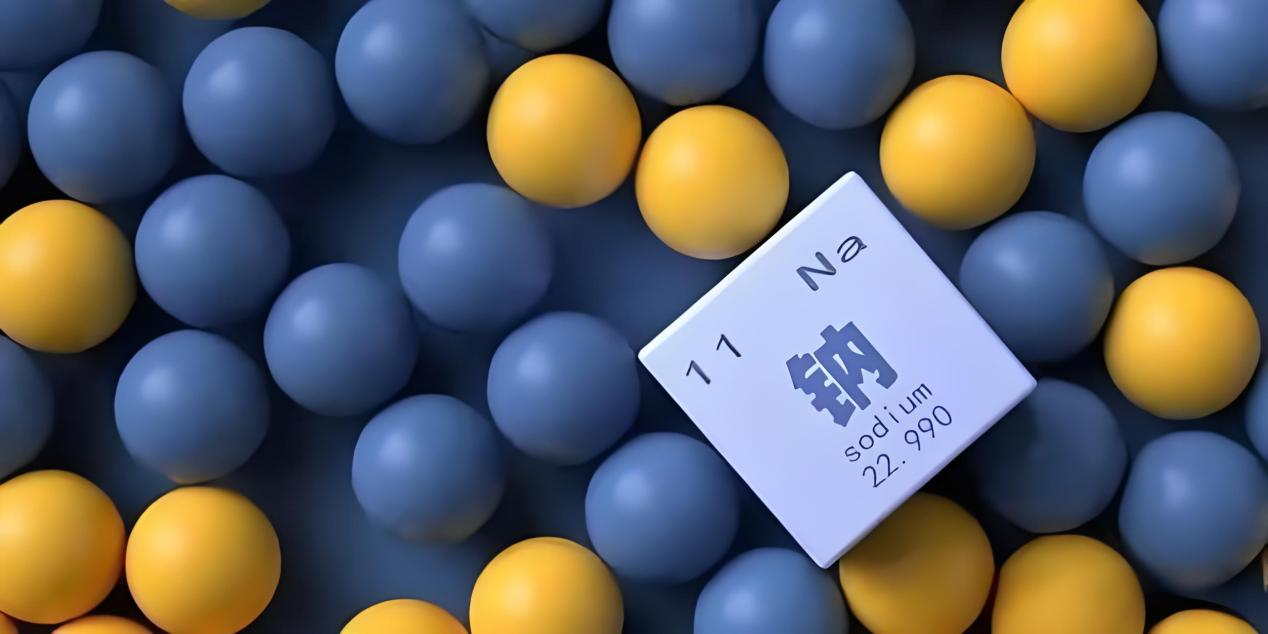
Solid-state sodium-ion batteries: the bright new star of next-generation energy storage technology
Recently, solid-state sodium-ion battery technology has once again attracted widespread attention in the industry. This new battery technology is regarded as a shining star in the next generation of energy storage technology due to its high safety, high energy density and abundant raw material resources.The working principle of solid-state sodium-ion batteries is similar to that of traditional sodium-ion batteries, but the key is that they use solid electrolytes instead of traditional liquid electrolytes. During the charging process, sodium ions (Na+) are released from the positive electrode material, migrate to the negative electrode through the solid electrolyte, and are embedded in the negative electrode. At the same time, electrons flow from the positive electrode to the negative electrode through an external circuit to maintain charge balance. The discharge process is the opposite. Sodium ions are released from the negative electrode, migrate back to the positive electrode through the solid electrolyte, and electrons flow from the negative electrode to the positive electrode through an external circuit to form an electric current. This unique mechanism makes solid-state sodium-ion batteries excel in energy density and safety.Solid-state sodium-ion batteries have significant advantages over traditional lithium-ion batteries. First, the reserves of sodium in the earth's crust are abundant, far exceeding lithium, so the raw material cost of solid-state sodium-ion batteries is relatively low. This helps to reduce the manufacturing cost of batteries and promote their commercial application. Secondly, solid-state electrolytes have high mechanical strength and chemical stability, and are not prone to safety problems such as leakage and combustion, so solid-state sodium-ion batteries have higher safety. In addition, solid-state electrolytes can inhibit the growth of sodium dendrites, thereby improving the cycle stability and life of the battery.In recent years, solid-state sodium-ion battery technology has made significant progress. Many scientific research institutions and enterprises at home and abroad have invested in research and development, committed to improving the ionic conductivity, chemical stability and compatibility of solid electrolytes with electrodes. At the same time, by optimizing electrode materials and battery structures, the energy density and cycle performance of solid-state sodium-ion batteries have been further improved.It is worth mentioning that solid-state sodium-ion batteries have shown broad application prospects in many fields. In the field of electric vehicles, the high energy density and long life of solid-state sodium-ion batteries help to improve the range and service life of electric vehicles. In home and industrial energy storage systems, solid-state sodium-ion batteries can be used as battery components to store and supply electricity to meet various electricity needs. In addition, solid-state sodium-ion batteries can also be used in renewable energy systems such as solar and wind power to store excess electricity and provide reliable energy support for unstable power grids.However, the development of solid-state sodium-ion battery technology still faces some challenges. First, the cost of solid-state electrolytes is relatively high, which limits the commercial application of solid-state sodium-ion batteries. Second, the interface stability between solid-state electrolytes and electrodes still needs to be further improved to optimize the electrochemical performance of the battery. In addition, the production process and technical maturity of solid-state sodium-ion batteries also need to be further improved.Nevertheless, as a bright new star of the next generation of energy storage technology, the development prospects of solid-state sodium-ion batteries are still worth looking forward to. With the continuous advancement of technology and the gradual reduction of costs, solid-state sodium-ion batteries are expected to play an important role in electric vehicles, energy storage systems and renewable energy, and contribute more to the sustainable development of human society.Jiayuan produces sodium fluoride stably . Sodium fluoride can provide a source of sodium ions, which play a key role in the battery charging and discharging process. In addition, the ionic properties of sodium fluoride enable it to form stable compounds with other materials, thereby optimizing the electrochemical performance of solid-state sodium ion batteries. The development of sodium fluoride and solid-state sodium ions complement each other and promote the further expansion of Jiayuan's strategic map.
More +
2024-11-15
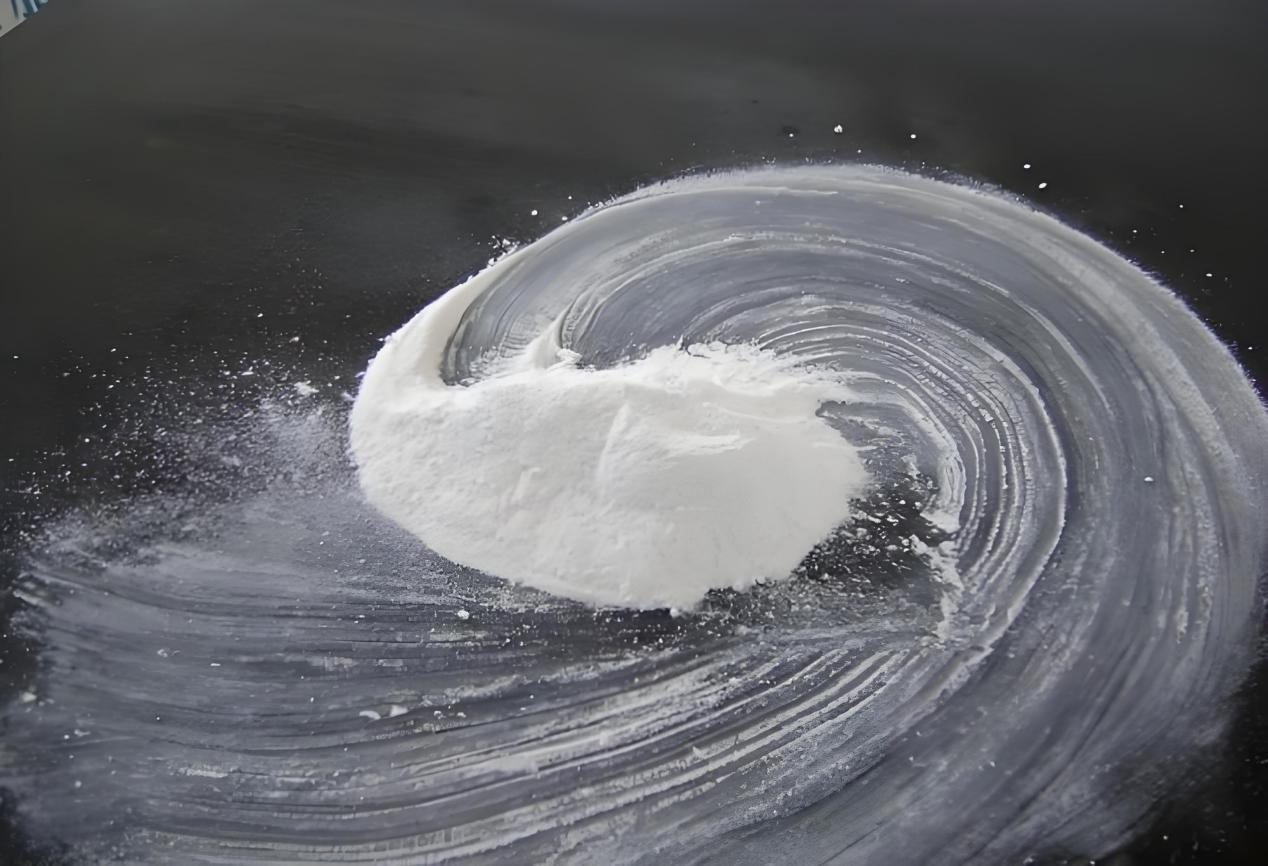
Zinc fluoride: a versatile inorganic compound
Zinc fluoride (chemical formula ZnF2, formula weight 103.37) is a white block or square crystalline powder with multiple properties and a wide range of applications. Recently, with the acceleration of industrialization, zinc fluoride, as an important inorganic compound, has been continuously released in the market demand.In terms of application fields, zinc fluoride has a wide range of uses. In the electronics industry, zinc fluoride is an important raw material for manufacturing electronic components and semiconductor materials, such as field effect transistors and metal oxide semiconductor field effect transistors. In addition, zinc fluoride can also be used to manufacture optoelectronic devices and solar cells.In the chemical industry, zinc fluoride is also widely used. It can be used to make chemicals such as fluoride and hydrogen fluoride, and is also an important raw material for making organic synthesis catalysts, coatings and plastics. Zinc fluoride is also widely used in the manufacture of ceramic materials, including high-temperature ceramics and electronic ceramics, as well as in the manufacture of ceramic glazes to make the ceramic surface smoother, harder and more wear-resistant.Zinc fluoride also plays an important role in glass manufacturing. It can be used to make optical glass and special glass, as well as to enhance the corrosion resistance and high temperature resistance of glass fiber. In addition, zinc fluoride is also used in the pharmaceutical industry, for example, in the manufacture of oral care products and drugs, such as anticancer drugs and antiviral drugs.At present, China is a major producer and exporter of zinc fluoride in the world. In recent years, with the upgrading of market demand and the continuous optimization of related processes, my country's high-end zinc fluoride production capacity has increased, and the zinc fluoride industry structure has gradually adjusted. Against the background of increasingly stringent environmental protection and market supervision, the development of the zinc fluoride industry will upgrade towards safety, greenness and high-endness.In conclusion, zinc fluoride, as a multifunctional inorganic compound, plays an important role in many fields. However, due to its toxicity, strict protective measures must be taken during use and handling to ensure the safety of personnel and the environment. With the continuous development of science and technology and the continuous expansion of market demand, the application field of zinc fluoride will be further expanded, bringing more convenience and benefits to people's lives and work.Jiayuan upholds a rigorous service attitude, resolutely implements standardized management, improves product quality and prevents risks , optimizes resource allocation , promotes industrial upgrading , and takes every step to ensure green, environmental protection and safety .
More +
2024-11-15
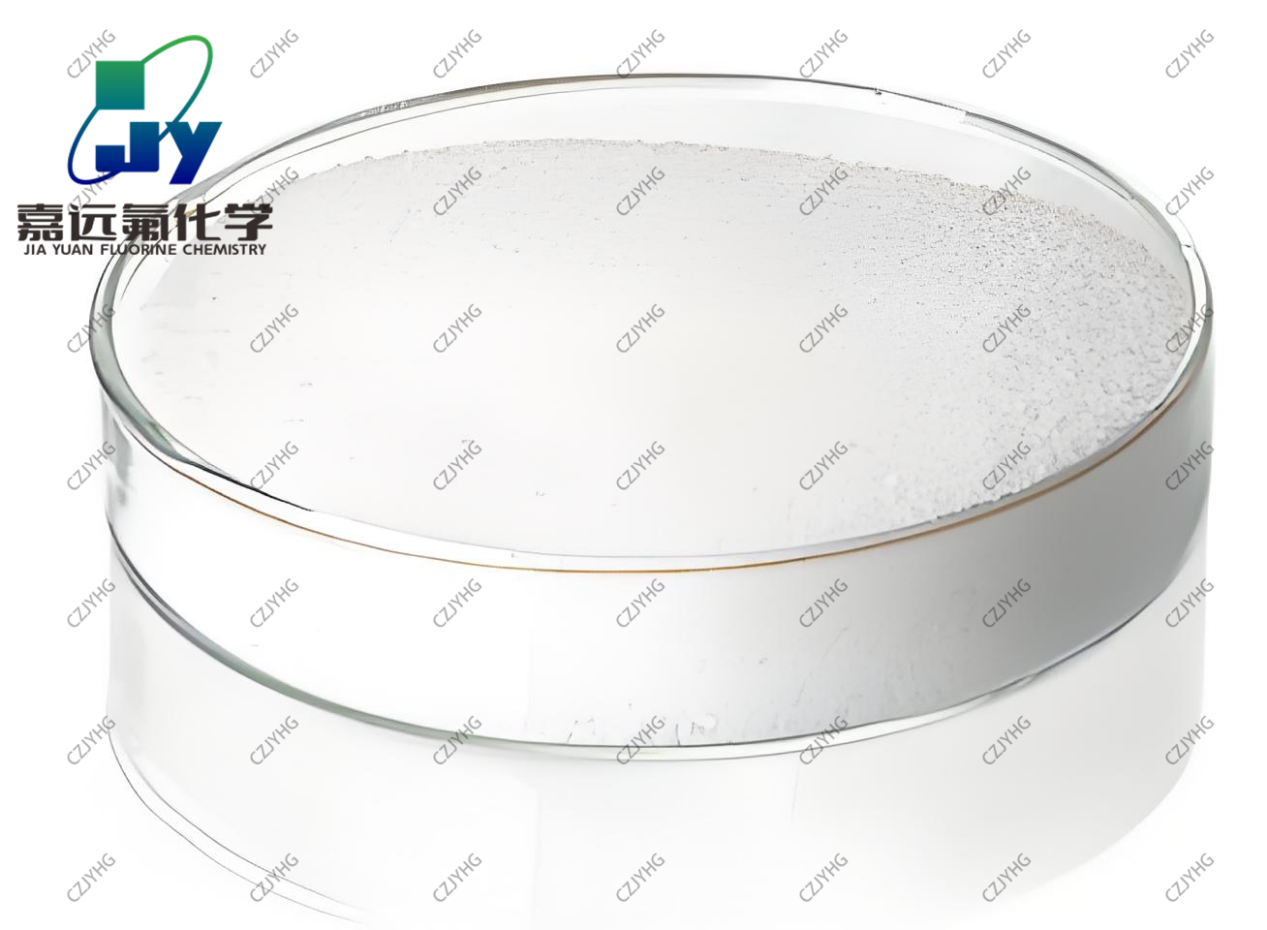
Product Introduction | Potassium Salt Product Tree——(1)Potassium
Potassium fluoride , element symbol K, is one of the elements of the IA group and belongs to the alkali metal elements. The single substance is a silvery white soft metal, waxy, can be cut with a knife, has low melting and boiling points, lower density than water, and extremely active chemical properties (more active than sodium). Potassium does not exist in the form of single substance in nature. Potassium is widely distributed in the land and ocean in the form of salt, and is also one of the important components of human muscle tissue and nerve tissue.Potassium in nature plays an important role in maintaining human health and promoting plant growth. In addition, many potassium-containing compounds also play an important role in industrial production . For this reason, the editor will introduce potassium fluoride in a series.Product Name: Potassium FluorideEnglish name: Potassium fluorideChemical formula: KFMolecular weight: 58.10Customs code: 28261900use:It is mainly used in the production of pharmaceutical intermediates , fluorinating agents for halogen exchange of organic chlorides and bromides, alkaline catalysts for organic synthesis reactions, dehydrating agents and additives for the manufacture of tantalum materials. It is also used in the production of intermediates for anticancer drugs, pesticides, dyes and other industrial products. It is used in the production of many inorganic compounds such as potassium hydrogen fluoride, potassium fluoroaluminate, titanium tetrafluoride, fluoroaluminum mullite, etc. It is also used in glass engraving, food preservation, electroplating, welding flux, etc. It is used in medicine to produce norfloxacin. High-purity potassium fluoride is used in the Stockbarger method to produce single crystals.Physical and chemical properties:White cubic deliquescent powder with a distinct salty taste. Relative density 2.481, melting point 858℃, boiling point 1505℃. Soluble in water. Potassium fluoride has two hydrates, KF·2H2O and KF·4H2O. Potassium fluoride dihydrate is crystallized in an aqueous solution at a temperature below 40℃, is stable at room temperature, and loses crystal water above 40℃. Anhydrous potassium fluoride can only remove a few percent of water by long-term drying at 250-300℃, and cannot be pyrolyzed at a high temperature of 1000℃. Potassium fluoride aqueous solution is alkaline and can corrode glass. Molten potassium fluoride is highly active and can corrode glass. Production methodNeutralization method . Prepared with potassium hydroxide and hydrogen fluoride as raw materials. Put solid potassium hydroxide of superior grade or above into a reactor containing an equal amount of water, and then pass anhydrous hydrogen fluoride from the bottom of the reactor for neutralization. When pH=7-8, stop passing anhydrous hydrogen fluoride, let the reaction liquid settle for 24 hours, and the clear liquid is vacuum evaporated, crystallized, transitionally separated, and dried to obtain the product.The reaction formula is as follows:HF+KOH→KF+H2OThe reaction solution can also be mixed with a surfactant, and after spray drying, a potassium fluoride product with high bulk density, high specific surface area, low hygroscopicity, high activity and reduced usage can be obtained. Packaging, storage and transportationUse polypropylene woven bags lined with two layers of polyethylene plastic bags or polyethylene plastic barrels. The net weight of the enzyme belt is 10kg or 25kg, and the net weight of each barrel is 50kg. It should be stored in a ventilated, cool and dry warehouse. The packaging should be firm and avoid packaging contamination, damage and moisture to prevent moisture and agglomeration. It cannot be stored or transported together with food or acidic or alkaline items. It should be protected from rain or strong sun during transportation. There should be a clear "drugs" mark on the package.
More +
2024-10-31
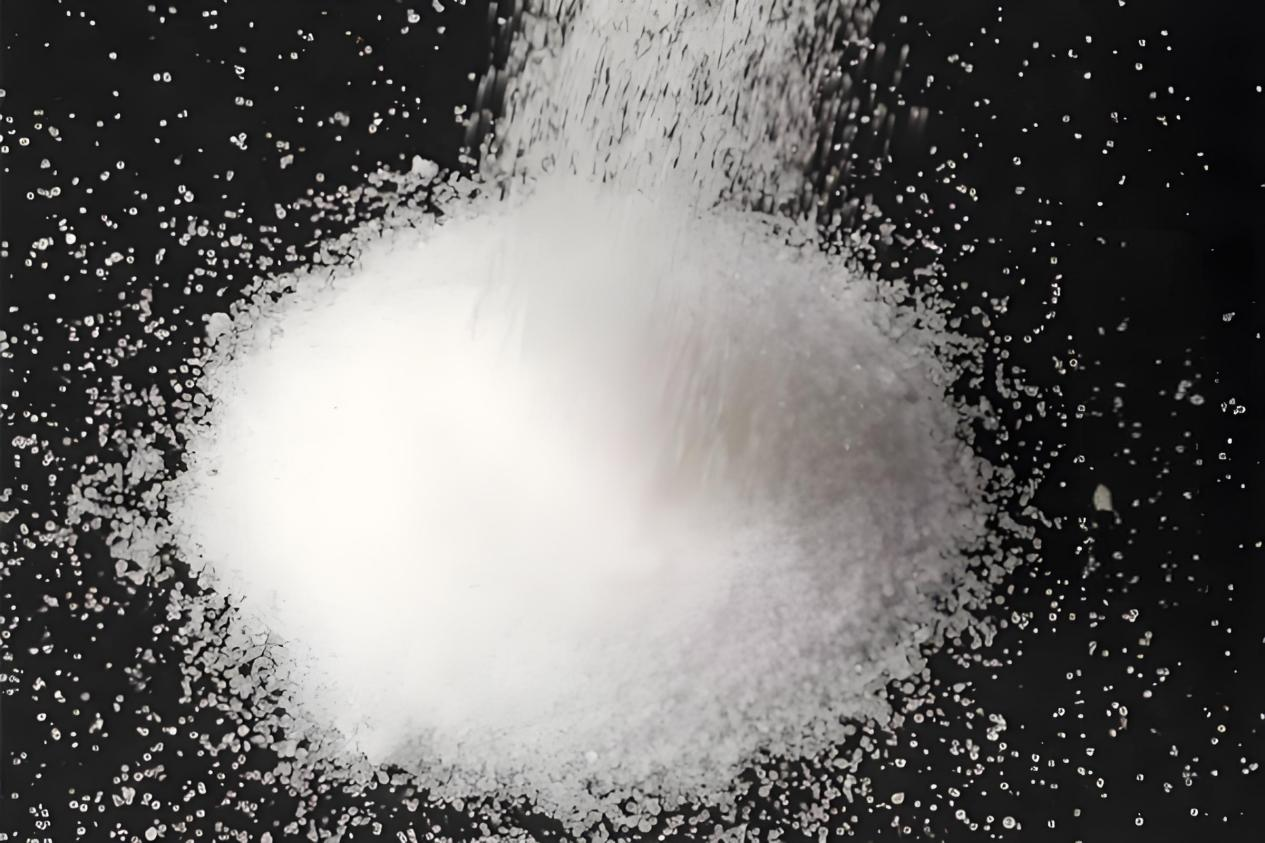
Analysis of the current status of the ammonium bifluoride industry in 2024
1. Market size and growth trendAs an important inorganic compound, ammonium bifluoride is widely used in metal surface treatment, metallurgical industry, electronic industry, etc. In recent years, with the continuous development and expansion of downstream application fields, the market demand for ammonium bifluoride has continued to grow, driving the continuous expansion of the market scale.According to data from market research institutions, the global ammonium bifluoride market size has reached a certain level in 2023 and shows strong growth potential. It is expected that in the next few years, the ammonium bifluoride market will maintain a stable annual compound growth rate, which will be above the industry average, showing a good development prospect of the market.In the Chinese market, the ammonium bifluoride industry is also showing a rapid growth trend. As the world's largest producer and consumer of ammonium bifluoride, the scale and growth rate of the Chinese market are both at the forefront. With the continuous development of the domestic economy and the continuous expansion of downstream application fields, the demand for ammonium bifluoride in China's market will continue to grow, bringing greater development space for the industry.2. Market CompetitionThe market competition landscape of the ammonium bifluoride industry is relatively fragmented, with several major competitors and numerous small and medium-sized enterprises. These competitors compete fiercely in the market and usually have different production capacities and market shares. Most competitors provide standard ammonium bifluoride products, but Jiayuan focuses on high-purity, special specifications or customized products to meet the needs of different customers.Globally, the ammonium bifluoride market is mainly distributed in North America, Europe and Asia Pacific. China is one of the major consumer markets in the Asia Pacific region, accounting for a large market share and is expected to continue to maintain strong growth momentum in the next few years.3. Application fields and market demandAmmonium bifluoride has a wide range of applications, mainly including metal surface treatment, metallurgical industry, electronic industry, etc. In the field of metal surface treatment, ammonium bifluoride plays an important role in the etching and cleaning of metals such as stainless steel and aluminum; in the metallurgical industry, it can be used as a flux in the flotation and smelting process of ores; in the electronic industry, ammonium bifluoride is used in semiconductor manufacturing and chemical production.With the rapid development of new energy, new materials and other industries, the application areas of ammonium bifluoride are also expanding. For example, in the field of new energy, ammonium bifluoride can be used in the research of battery electrolytes, solar photovoltaic materials, etc.; in the field of environmental protection, it can be used as a green refrigerant to replace traditional CFCs and HCFCs. The expansion of these emerging application areas will further promote the growth of market demand for ammonium bifluoride.4. Production process and technology developmentThe production process of ammonium bifluoride mainly includes neutralization method, amination method, gas phase method, etc. With the advancement of technology and the upgrading of equipment, the production efficiency of ammonium bifluoride continues to improve, and the product quality is also steadily improving. At the same time, enterprises are also constantly innovating production processes and product applications to meet market demand and improve competitiveness.In terms of technological innovation, Jiayuan focuses on improving product purity, developing new catalysts, and expanding product application areas. These innovative achievements not only improve the production efficiency and product quality of ammonium bifluoride, but also provide possibilities for its application in more fields.In summary, the ammonium bifluoride industry in 2024 will show a positive development trend in terms of market size, competition pattern, application fields and market demand, production process and technological development. In the future, with the continuous advancement of technology and the continuous expansion of the market, the ammonium bifluoride industry will usher in a broader development prospect.
More +
2024-10-31